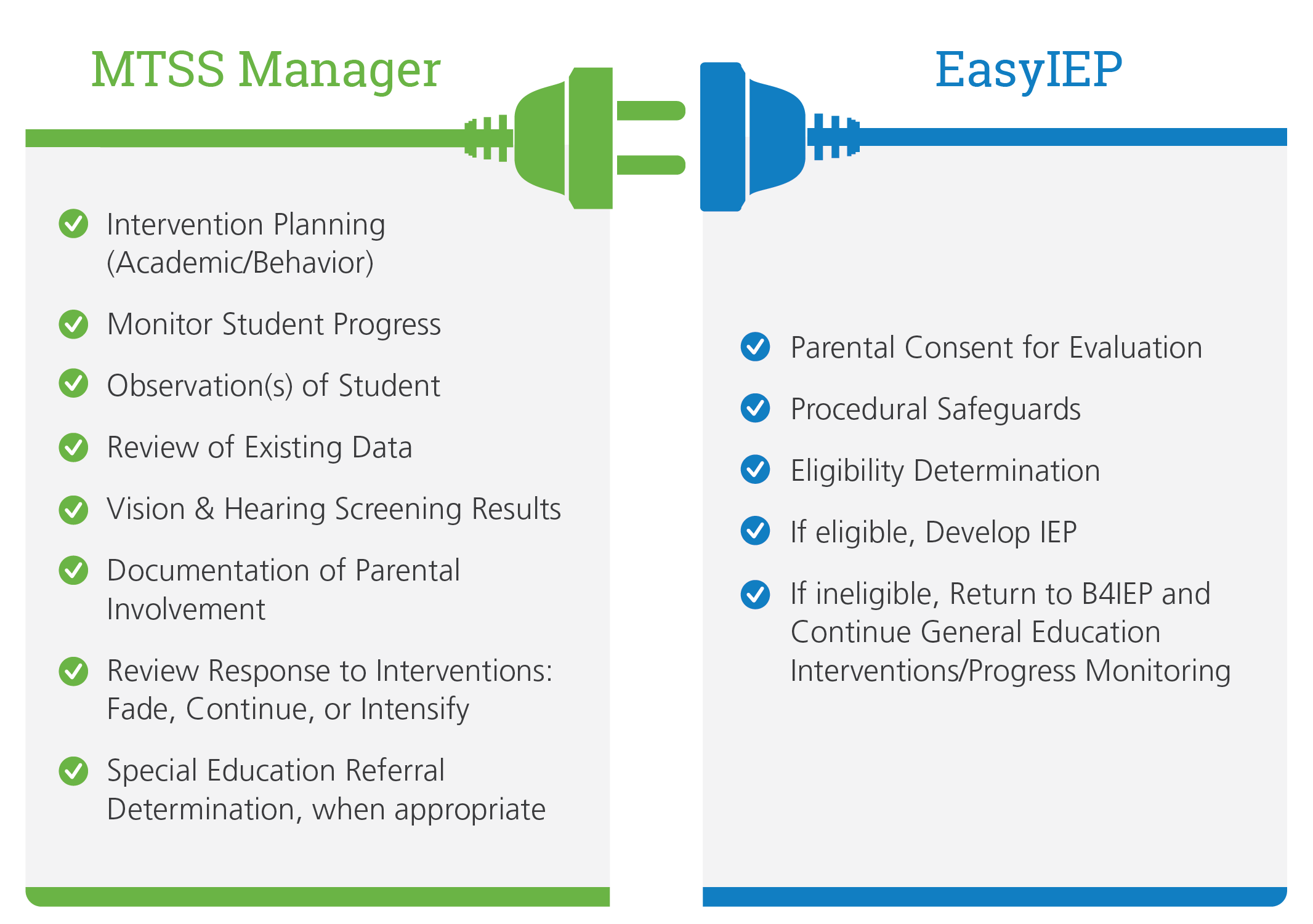Author: Mollye Kiss, Senior Consultant – PCG, Former SPED Director and MTSS Coordinator.
“At-Risk, Disproportionality, Over-Identification, Child Find, Student Outcomes…” These words, often associated with Multi-Tiered System of Supports (MTSS), haunted me as a former director of students with disabilities in need of special education supports and services – but I thought to myself, do they need to be? I often woke up in the middle of the night pondering what I could do differently to help ensure the appropriate students were being identified for special education and the services they received were fitting.
I realized it all boils down to one thing: targeted instruction. Working in education for over thirty years, I have seen many strategies come and go, but the one that has withstood the test of time is the response to instruction/intervention. This collection of practices involves identifying academic risk, intervening prior to academic failure with increasingly intensive interventions, and monitoring student growth. In other words, spend less time admiring the problem or blaming the student and more time on improving learning.
Response to instruction/intervention, commonly known as RtI, is the last step of the problem-solving process and a part of the bigger MTSS framework that has become part of the fabric of almost every school in the United States. When school districts use a consistent progress monitoring system within a framework of MTSS, they can identify and provide targeted academic and behavioral interventions to support students at risk of not meeting grade level standards, including students with disabilities.
You might agree with everything I’ve said so far, but are asking yourself, “How can I possibly manage all this information?” My response is, “Very carefully.” Otherwise, inequitable or inappropriate decisions about students could be made unintentionally.
PCG is here to help, with our web-based system called EDPlanTM. You may already be using this platform to manage your IEPs and/or Medicaid billing, but did you know the tool can do even more? The EDPlan Early Warning and Intervention Management modules allow you to quickly identify students at risk, create and monitor intervention plans, log interventions, and house other important data, such as screening results and observations. Knowing which interventions a student is receiving and how they are responding leads to greater student success.
Click on this link to learn more about “Intervention Management Made Easy and Effective.”
Desired Outcomes
|
How PCG Can Help
|
Proven Results
|
|
- Optimize your general education intervention procedures.
- Create, manage and monitor academic and behavioral interventions and other pre-referral activities, while easing teacher workloads and improving student outcomes.
|
- EDPlan Early Warning & Intervention Management System
- Help educators quickly identify students at risk (for academics and behavior), create and manage intervention plans, and meet state and federal CEIS guidelines to improve disproportionality and over-identification.
|
- National leaders in Early Warning & Intervention Management
- Wake County Public School District has used our intervention management system district-wide since 2012 to support early warning, intervention and incident management efforts. (EWS/MTSS)
- The State of North Carolina has adopted PCG’s Early Warning & Intervention Management System as a part of a state-wide deployment. All K-12 students in NC (over 1.6 million) will be on PCG’s platform by spring of 2019.
|
